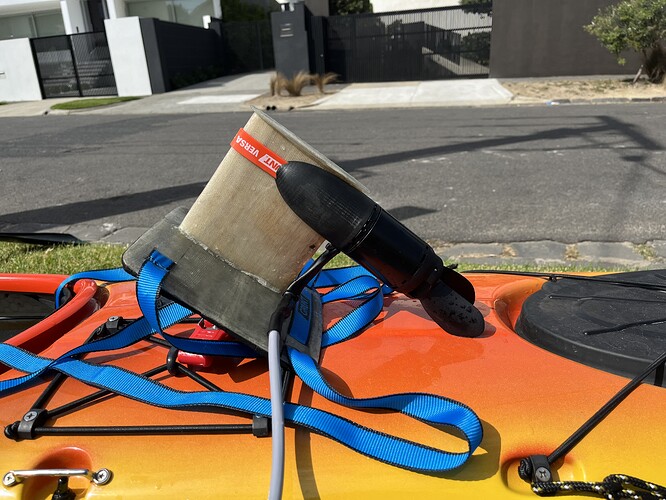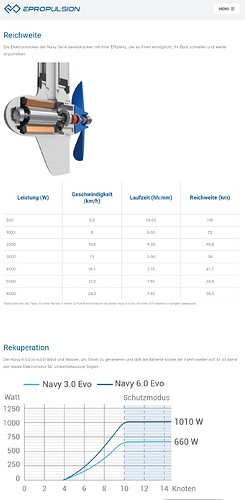Good friend has a sea kayak and has recently adapted a Faux Drive I made for him. It’s 8s3p 21700 Molicel, Flipsky Max6 esc, folding prop 186mm diameter. Motor is Saite 6384 130kv factory waterproofed.
He is getting approx 10km motoring at about 10 or 11km/hour. Running at something like 20 or 30 percent throttle
His ideal battery capacity would give him 40km.
Loaded touring sea kayak can be up to 100kg and he is a big guy around 90kg.
So a couple of questions, is there any loss off efficiency running the motor at low RPM? I do have a 70kv 6384, would it make more sense to run that?
Then of course the prop, presumably a prop change to something g designed to run at lower rpm would make a huge difference.
Would be very grateful if anyone has any ideas or knowledge that would help us get to the desired 40k. My guess is different prop for a start, but changing to different battery voltage ![]()
He’s happy to start again with battery and esc and prop. Folding prop isn’t required, he has made a small removeable mast that he straps onto the boat.
Thanks !
I’m certainly no expert but it seems that total weight isn’t an issue so would just increasing the P count of the battery pack or carrying several packs not solve the range problem?
Thanks Foilguy, that would certainly work and no doubt we will increase the battery pack size. At this stage it’s more about prop diameter and pitch and whether running the esc and motor at part throttle is inefficient.
Again out of my depth of expertise but the thinking around propelling a kayak vs an efoil is quite different imo
The kayak will have a hull speed where the efoil once flying sort of doesn’t so the efficiencies are quite different
I would think a prop with a strong low end would be useful on a kayak (powering against waves or current etc) Top speed efficiency wouldn’t be much of a factor.
My two cents for what that worth😀
Your battery gives the complete energy to the system. Any boat and motor combi will have less range the more speed you go. That is the main fact. Of course you can optimize a little bit to get less energy lost. But this is not very much if motor runs good at the moment. Maybe max. 10-15% I guess. depends on several things. Go for a second battery then you surely know, you will double the range. Any thing else will only waste your time and money. Or drive slower than your range is growing a lot.
Here you can see how much speed got effect for the range on a boat.
Have a query relating to the viability of connecting multiple battery packs in parallel.
For the sea kayak application one option would be to have three packs in parallel, he already has one 8s3p with charging BMS only. If we were to ensure the packs were all made from identical cells is there a significantly greater risk of problems connecting packs in parallel rather than making one big pack? Scenario I’m concerned about would be one cell in one pack failing and the other packs dumping high current into the damaged pack.
No. Theres no greater risk as already using without a BMS. I normally build 6s batteries that end up setup with others in series and parallel.
If one pack is empty, change directly on the motor no parallel connecting is needed. But better build packs with bms included on every Pack. You can calculate the needed watts in relation to the range. Then decide how big your Pack must be. I can recommend 14s liion 50ah in a waterproof suitcase. Easy to carry and around 18kg.

